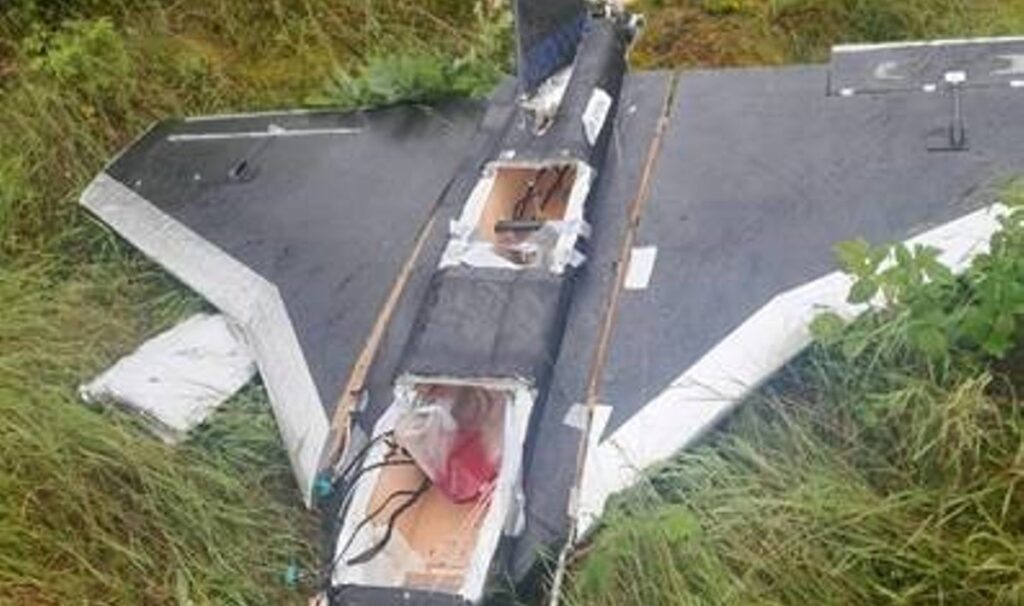Lithuania tracks fake Russian Shahed from Belarus—NATO jets scrambled

Russia’s Gerbera drone crash in Lithuania occurred after the object entered from Belarus and fell near the Šumskas checkpoint. According to Delfi, it resembled the type of UAV Russia uses in its war against Ukraine.
Lithuanian military tracked object from Belarus before crash
On 10 July, around 11:30, Lithuanian Armed Forces detected an object approaching from the direction of Belarus. In a Facebook post, the Armed Forces said the Air Force activated NATO fighter jets already in the air by switching them from training to mission mode.
Shortly after detection, the object fell to the ground. The mission was canceled. Military units notified the State Border Guard Service (VSAT), and troops were sent to the crash site.
The Lithuanian military said the object appeared homemade and posed no danger.
Drone crashed near closed Šumskas checkpoint
Delfi, citing border guards, reported the drone crashed approximately one kilometer from the Belarusian border, close to the closed Šumskas checkpoint in Vilnius District Municipality.
BNS initially reported the object as a Shahed 136 drone — an Iranian-designed craft carrying 50 kg of TNT, which Russia widely uses to target Ukrainian cities. However, that was later corrected. A VSAT representative confirmed it resembled a homemade UAV.
Giedrius Mišutis, spokesperson for VSAT, stated the drone was first detected by the Kenna outpost.
“It appears to be a homemade UAV,” Mišutis said. “There is no indication the object carried any cargo.”
The object was reportedly made of plywood and foam. Officials said it posed no threat.
Mišutis also noted that VSAT had not recently observed smuggling activity involving drones, balloons, or improvised aircraft.
Defense Express: Lithuania failed to identify or down the drone
The Ukrainian outlet Defense Express criticized Lithuania not only for failing to intercept the drone, but for failing to identify it altogether. The publication emphasized that the deeper issue lies in the lack of basic knowledge about Russian drone types.
“The real problem,” the outlet noted, “is that they don’t know what even Ukrainian children consider common knowledge.”
Read also
-
Russia may invade Estonia in “five or seven years,” NATO chief Rutte says
-
Lithuania and Finland to start domestic landmine production for themselves and Ukraine amid Russian threat
-
Only 40% of Russian capacity under sanctions, EU must step up, Lithuania says
-
Russia equips decoy Gerbera drones with explosive payloads